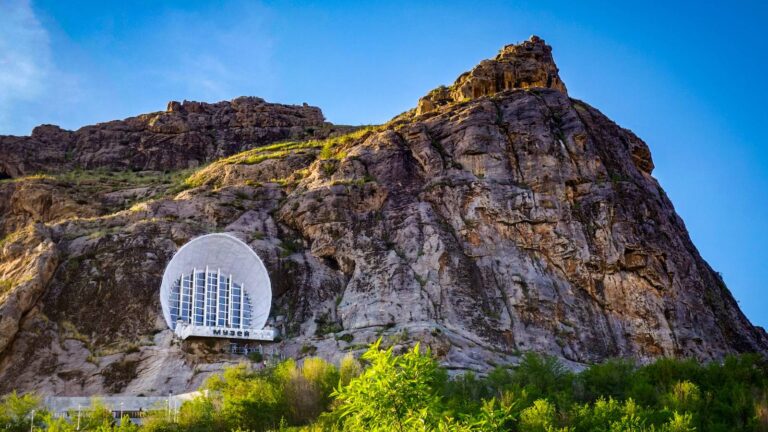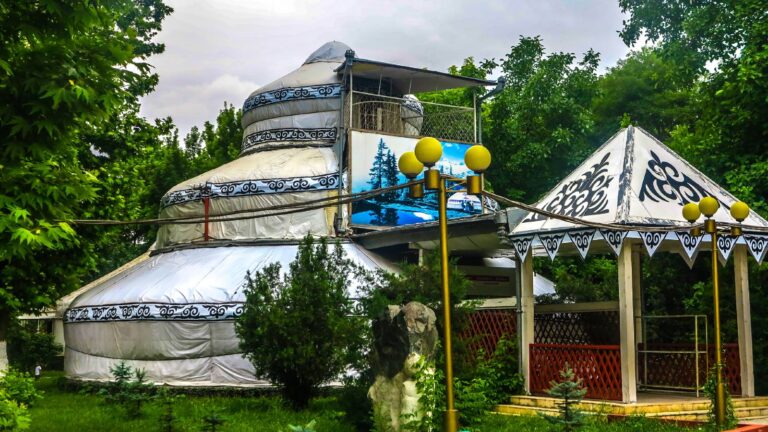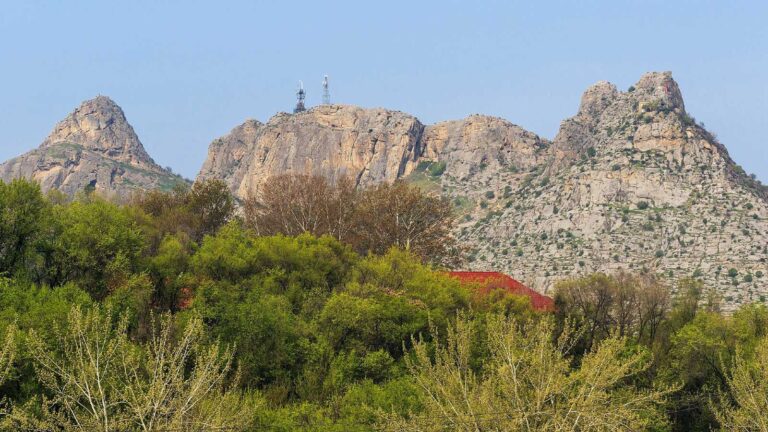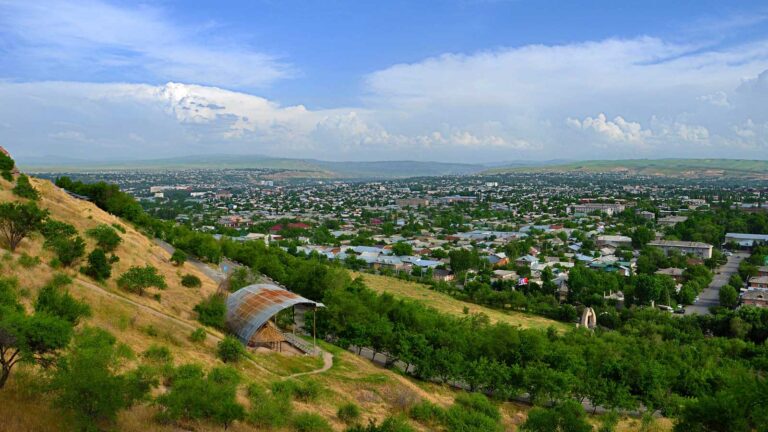Getting There
From the side of the museum there is a public transport stop “Sulaiman-Too”. It can be reached by: bus and fixed-route taxis.
What to Expect
The most striking attraction of the Sulaiman-Too Museum is that it is located in a mountain cave. The museum contains petroglyphs, some of which are millennia old, as well as at least 12 holy caves visited by numerous pilgrims. In ancient times, hermits lived in these caves, altars and mazars were located, so people come here to pray and ask for help from the saints.
Numerous petroglyphs on the slopes of the mountain serve as confirmation that people settled here long before the appearance of world religions. Rock inscriptions are the most ancient artefact of Sulaiman-Too. In total, about 400 petroglyphs were found on the mountain. Some of the inscriptions are made in ancient Arabic script. There are petroglyphs of the Zoroastrian era.
Due to its uniqueness, Sulaiman-Too became the first Kyrgyz site to be included in the UNESCO World Heritage List.
History
The museum was founded in 1949. During its long history, it has changed its name several times. The museum stores more than 33 thousand exhibits related to the history, archaeology, art, nature of the southern region of Kyrgyzstan.
The exposition of the museum complex is divided into two main sections dedicated to the nature of the region and its history. Here you will find ancient manuscripts and coins, household items and felt products, books and photographs, as well as gifts to the city from high representatives of foreign states.
The branches of the Sulaiman-Too museum complex include several small regional museums, such as: the Museum of Urkuy Saliyev, the Museum of the Nookat region, the architectural complex “Ozgon” (Uzgen), the Museum of the collective farm “Russia”.
The Sulaiman-Too Osh Museum also includes the only Museum of Spiritual Culture in Kyrgyzstan, located on the southern slope of Mount Rushan. The first floor of this museum consists of expanded karst caves, while the top floor is made up of a natural cave. There are 13 premises in the building with a total area of 1238 sq.m.
The location of the Museum of Spiritual Culture on one of the peaks of Sulaiman-Too is not accidental. There are petroglyphs here, some of them are millennia old, as well as at least 12 holy caves visited by numerous pilgrims. In ancient times, hermits lived in these caves, altars and mazars were located, so people come here to pray and ask for help from the saints.





